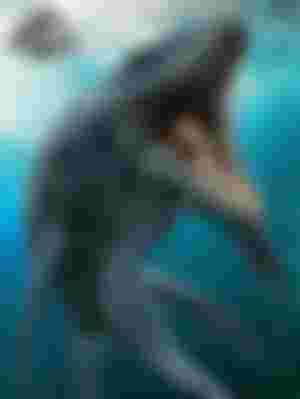
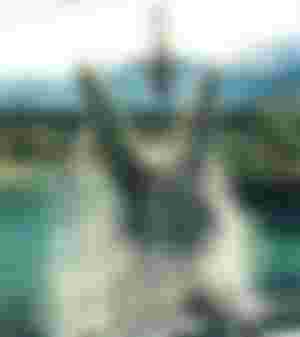
Mosesras: Maestric's hunting lizard
In a story, when we hear about a strange kind of predator, we not only lose our hair, but also hide our face in fear. And if that terrible creature is the sea? Or any wetland in the Amazon?
"Open water", "Deep rising", "Jaws", "Deep Blue sea" type movies were very popular in childhood. There are hardly any people who have not been thrilled to see the sea monster shown in the movies. One such movie was regularly shown on HBO, Star movies. The reason I like these movies is because of the deep sea, the mysteries hidden under the water, the monster-shaped creatures. The underwater world is always a little scary, mysterious.
Not a movie monster today, but a story of a sea monster who lived on this earth 62-6 million years ago. Mosasaur. Don't confuse it with Messrs. Dino. A total of 36 species of animals are referred to as Moses. They are divided into many groups and subgroups. However, the largest mosses belong to the Mojesras genus. So we will be in the main discussion about Mosesras.
Towards the end of the Cretaceous era (the Campanian and Maastrichtian stages continue). At that time the animals of the genus Moses were ruling in the sea. In fact, Moses is not the name of a particular species, but the name of a genus. Fossils have been found in many species belonging to this genus.
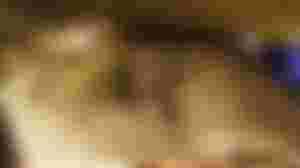
In 184, a fragment of the animal's skeleton came into human hands, from underground limestone ore at the foot of Mount St. Peter, near Maastricht. This animal is then thought to be as large as a whale. In the same way, with the description of this fossil, Mosesras was then presented to the public.
"A species of big breathing fish."
In fact, Moses was not a fish. If we look at its classification, their order was Squamata and class was Reptilia. In other words, they were reptiles, lizards roaming the walls of your home, but reptiles. The squamata are the largest class of reptiles. If we look at the naming of Mosesras, we will see that Mosesras means-
"Lizard of the Meuse River."
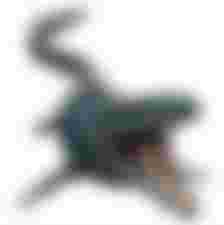
The town of Maastricht we talked about a while ago is located near the river Muse. However, in the process of finding and discovering fossils, we have found many fossils of Moses animals.
By the end of the Cretaceous, Moses had acquired the title of the most feared marine predator. In the Cretaceous era, a type of aquatic lizard called Agyalosar would find itself on this earth. Evidence suggests that the Moses animals evolved from this agiallosa. During the time of Agyalosar, two more terrifying predators were in power. Ichthyosar and pylosar. These were the most hunted animals in Daputa at that time. But they became extinct at the end of the Cretaceous when Moses was separated from Agiallosar. Turonian- Maestrician stage. As a result, Moses became the most feared predator of all time. We've seen sharks / sharks in the movie to hunt people, we're scared of that, but the Mojesras animals (the largest-sized Moses, the most dominant species of predatory Moses of this genus) put these sharks at the top of their food list. They ate sharks, sea turtles, bony fishes, cephalopods, different species of birds. The most frightening thing is that the animals of this hunter-gatherer group used to prey on their own cousins, that is, the food of the mojesars belonging to other tribes. For this reason, current researchers have placed the Mosesars not only among the Mosesars but also among the most feared predators of the ecosystem of the time.
Animals of the genus Moses were more than nine meters in length. That is, all the animals in this genus are larger than nine meters in length. Usually they can be 10-16 meters. Among the closest relatives of the Moses animals are our familiar Guisap or Monitor Lizard and the Komodo Dragon. There are many similarities between the animals of Moses and their skulls. Their tails were very long and their edges were slightly curved like ichthyosaurus. All types of mosaics had four types of teeth in their jaws.
There were three types of teeth in the upper jaw-
1) Premaxillary tooth
2) Maxillary tooth
3) Terigoid tooth
And a kind of tooth in the lower jaw. Dental tooth.
Come back to the words of Mosesras. The jaws of the Mojesras were somewhat conical, they could move their jaws back and forth smoothly for the flexibility of their necks. This smooth movement helped them catch their prey. Due to the special arrangement of the two-legged jaws, they could widen their lower jaws much more when catching a large prey.
Just as not all Moses animals are the same size, there are small differences in the anatomy of animals belonging to the genus Moses. However, there are some characteristics that distinguish animals from this genus. The circumference of their tooth enamel is somewhat prism shaped. The teeth are arranged in such a way that once the prey enters the jaw cavity, it cannot free itself no matter how hard it tries to swallow. The teeth of reptiles of the genus Moses are considered to be the strongest and largest. However, the teeth of some species (Conodon, Lemonnieri) are not so strong. In the case of the cutting edge, the variety varies from species to species. Some species of teeth have cutting edge grooves, some species are smooth again. Interestingly, in some species of animals, both smooth and grooved teeth are found at the same time.
If we look at the dental formulas of the animals of the genus Moses, we will see- (2. 12-17. 6-17) | (14-16). This means that there are 2 premaxillary teeth in the upper jaw, 12-16 maxillary teeth in species or sometimes in animals, 6-17 terrigoid teeth. And in the lower jaw there are 14-18 dentures.
According to a study of fossil-derived tissue from the Mojesras, their metabolic rate is much higher than that of the squamous reptiles found today. Their metabolic rate is between Leatherback Sea Turtle and Ichthyosaurus. The Leatherback Sea Turtle is the largest living turtle and the fourth largest of all current reptiles.
Moses animals were endothermic, warm-blooded animals. This feature is not found in squamous reptiles, this feature has made Moses unique and has helped a lot in survival. The word endotherm has two parts - "endon" and "therm." Endon means within, therm means heat. Endothermic animals are warm-blooded, they can maintain their body temperature balance (temperature conducive to metabolism). They depend on the energy produced by the various chemical reactions inside their bodies, not on the temperature of the environment. As a result, endothermic animals have the advantage of surviving in extremely cold environments.
One of the benefits of being endothermic was that Moses animals survived in subpolar areas such as Antarctica when sea temperatures dropped to their lowest temperatures of the year (4 ° 5 ° C, sea surface temperature 0 ০ or less). They had a lot of stamina, they could roam over a large area and hunt. As a result, in hostile environments (very low temperatures) when other animals or other squatters suffered from food shortages, the Mojesras would go to bed with a full stomach like the Bengalis.
The long tails and paddle-like limbs of the Mojesras helped them swim very fast, about 30 miles per hour. Their body scapula, humerus was fan-shaped; Radius and rack were short. Their eyes were on either side of the head, much larger in size, and the fossil eye sockets and sclerotic rings in the fossils give the impression of larger eyes. Although their eyesight was good, binocular vision (the ability to create three-dimensional images) was hampered by the presence of eyes on both sides of the head. Rather, they viewed two-dimensional images of the environment over a wide area. With eyes on both sides of the skull, they could be aware of much of the environment on either side of them at the same time.
Although the reproductive system of the Moses is not well known, research into their skeletal structure and other theories suggests that they reproduced like mammals. That is, the embryo was formed inside the body and the child grew inside the body till the time of childbirth. Researchers have found fossils of a pregnant member of the Mosesroid family, as well as fetal fossils of two Moseser animals.
We have already seen the eating habits of the Mojesras. Moses' animals had a weakness despite having so much strength. That is their sense of smell. Weakness of this sense of smell is rarely seen in predators. Despite this weakness, the Mojesras became such strong and formidable predators because of their two-dimensional vision that they actually hunted most of the time near sea level, allowing them to easily identify prey.
There is another interesting piece of information about the prey of the Moses. A large-sized nautiloid (large-sized cephalopods) fossil has been found. There are two types of bite marks on his body, the bite force of one bite is relatively low, the other is high; Both are mojesras animals. Two possible hypotheses can be based on this information.
1) He was first lightly bitten by a Mojesras to subdue the nautiloid. But despite the bite, Nautiloid has somehow escaped from the jaws of Mojesras. So again put a more powerful bite.
2) Two separate mosesras. An adult, strong. The other is Young, boy. The byte force of the young Mojesras is much less. And the byte force of the adult mosesras is higher.
The first hypothesis has no basis. Because the analysis of the signs caused by the two bites has shown that there are differences in the shape of the jaw. Low bite force bites the jaws of the relatively young Mojesras. Then came the strong evidence and argument in favor of the second hypothesis. But from here another conclusion and another hypothesis moved the researchers. In fact, the adult Moses is the mother and the young Moses is his child. The mother is teaching her child how to hunt; It is as if the mother is teaching her child not only turtle or bony fish found near the sea level, but also cephalopods as an alternative food if needed.
Which may be a stronger argument for this hypothesis; I have seen before that the animals of Moses take the food of other Moses animals. The chances were that the young, weak Mosesras would become an adult, the strong Mosesras food; That did not happen. But they may be of the same species; Moses of the same species do not take each other as food. Then at least there should be a fight over food; Because conflict is normal when you and another follow the same prey. But no such signs were found. So researchers see this as "parental care"; All the arguments also support this hypothesis. There may be more signs ahead that will shed light on this subject for us.
Since I mentioned the competition for food, let me introduce you to two more competitors of Mosesras. Tylosaurus and prognathodon. These two animals are also Moses animals. In terms of size and prey, they are second only to the Mojesras. Tylosarus could grow to about 40 feet in size and prognathodon in the shape of about 39 feet. Their food list also included various marine reptiles, animals like the Mojesras. Since the food list is the same, the competition between these three species of animals is normal; Evidence of this competition also shows signs of various conflicts found in the match fossils.
Now let's talk about a slightly different topic. How do I know if their food list is the same or what is the food list of a mogul?
1) Different fossils are found at different times that may have been hunted, killed, but not eaten or partially eaten by the Moses. Seeing the tooth marks on them.
2) The skulls of various animals can often be found with the fossils of Moses. There is only one such example. Fossils of a mosaic have been found 65 million years ago, along with various foodstuffs and food remains in the animal's stomach. By analyzing these food components, the remains of a fish about 1 meter long were identified which is longer than the skull of the eater Mojesras. Moses was small in size, about 6 cm in length. From this analysis, besides the eating habits of Mosesras, another thing is known - they are macrophages. Able to eat food larger than their own body.
3) Now let's come to the most useful way to know the eating habits of Mojesars. Carbon-13 dating. Foods high in lipids reduce the amount of carbon-13 isotopes in the body of the eater. That is, the tropic level of a eater is proportional to the intake of extra fatty foods. The amount of this carbon-13 isotope in the fossils of Moses is much less. This proves that the Mojesars used to eat various sea turtles, bony fish and reptiles. These foods are high in lipids.
Moses was not the largest marine reptile of all time. Larger marine reptiles than him are Shastasaurus. But Shastasras was not such a terrible predator as Mosesras. So they could not terrorize the sea like Moses. The habitat of this Mojesras extended from North and South America to Asia, Europe, Australia. Mojesras also lived in clear water in Hungary.
The Mosesras became extinct in the K-Pg event, also known as the K-T event. K-Pg stands for Cretaceous-Paleogene boundary and K-T stands for Cretaceous-Tertiary boundary. At this time, not only Moses, the king of the sea, but all the creatures that ruled the earth at that time became extinct. This list includes dinosaurs, various mammals, pterosaurs, birds, plants, etc. What happened during this period? What is the reason for so many lives lost from the earth?
The most accepted theory in this regard is the "Alvarez theory". Father Louis Alvarez and son Walter Alvarez provide this theory. They say that in the event a meteor or asteroid 10-15 km in diameter hits the earth; Maybe it's a comet. As a result, the balance of the earth's environment is completely lost. Later, in the 90's, a 160 km wide meteorite was discovered in the Yucatan Peninsula of the Mexican Sea; Chiksulab Meteor Shaft. Volcanic eruptions, climate change, sea level rise were also considered as factors.
Moses is very dear to me personally, mainly because they are marine. The creatures that live under the sea, live, reign millions of years ago or present, they are mysterious to me. Knowing about this chameleon that reigns under the sea may increase your attraction to the chameleon walking in your home or the monitor lizard in the garden. I will end this informative part of the article about Mosesras with an important piece of information.
The largest mosses of the genus Mosesurus were found in the genus Mosasaurus hoffmanni.
What if?
I will express my thoughts in this part of the article. The idea for this part comes from the popular YouTube channel "What if". Here are some of my own ideas with an interesting opinion mentioned in that channel:
1) We learned that there was a topic of parental care among the Moses. What if without parental care, Moses would have teamed up and attacked? In the One Versus One battle, Moses will not be able to do much damage to the Megalodon shark; But a team of 50-56 feet tall Moses could easily have defeated any of the most feared or largest marine creatures in history.
2) According to What if's theory, if Moses had been able to survive the K-Pg event in any way, the Megalodon shark might not have found the kingdom of the sea. Because sharks were one of the food of the Moses. Megalodon sharks became the food of the Mojesras at a young age and soon lost their existence.
3) If the sense of smell was strong, many more species of animals would be included in the food list of Mojesras. Their hunting skills would increase.
4) In the first point I said that Megalodon will win the battle of Megalodon Shark and Mojesras's One Versus One. One of the reasons for this is that Megalodon has five rows of teeth while Mojesras has two rows of teeth. Again the megalodon shark is so large in size that Mosesras will never be able to trap the megalodon in his jaw in such a way. That's why it's hard to injure Megalodon. Maybe Mosesras can break any part like fins or paddles where Megalodon sharks can break the state of a Mosesras.
But an interesting thing has been ignored everywhere when comparing the abilities of these two creatures. The speed of the Megalodon Shark is 16 km per hour while that of the Mojesras is 30 miles per hour (Source: Wikipedia). That is, the speed of Mojesras is about 2.6 times. Now think. No one was able to do you any harm, but if you plucked one of your fingernails or broke your finger, you could not catch him. Who will win?
You see, in the words of Apu Bhai, "If I win Mojesras, will I get Fach money?" Yet with the issue of speed in mind, every time I imagined a battle between the Megalodon Shark and Mosesras, Mosesras won just because of his speed.
However, the K-Pg extinction period was not possible for survivors. With the exception of some marine leatherback turtles and crocodiles, none of the reigning animals of the time survived. Extinct from the earth has written its name in the pages of history.
References:Wikipedia

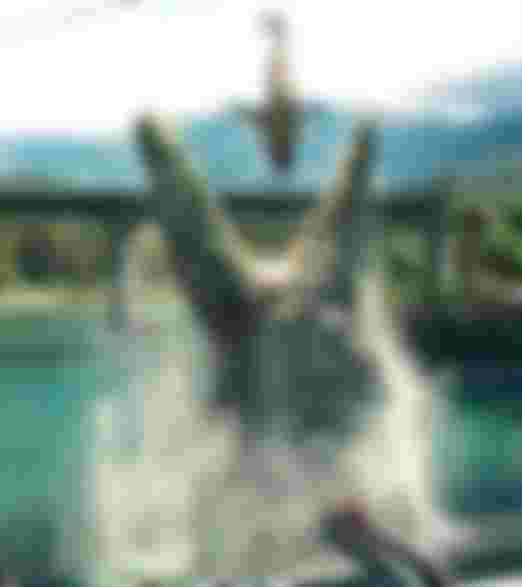
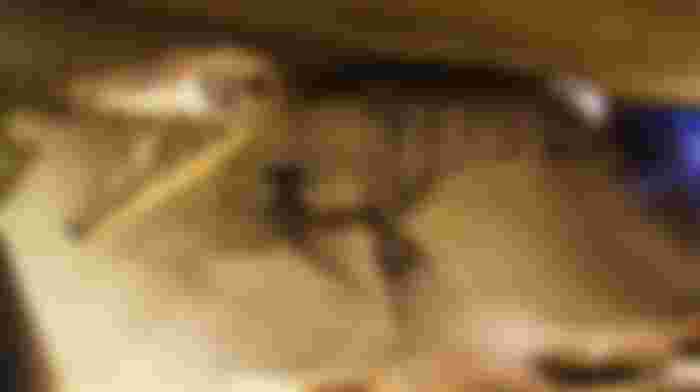
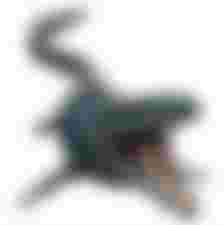
Good writing dear...